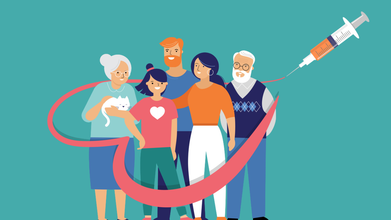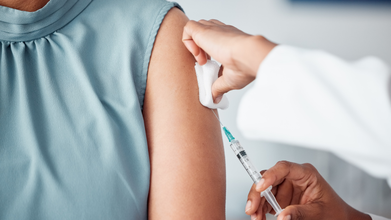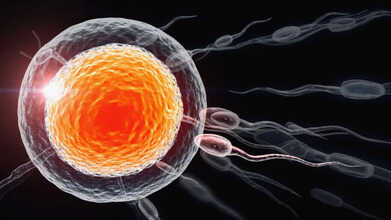- Health Conditions A-Z
- Health & Wellness
- Nutrition
- Fitness
- Health News
- Ayurveda
- Videos
- Medicine A-Z
- Parenting
Migraines In Women: How Hormones Influence Neurological Health

Migraines In Women: How Hormones Influence Neurological Health
For those who have not experienced a migraine, perhaps it would seem just another headache. But for someone like me who has suffered through migraines that will last over a week even with medication, I can definitely tell you that it's much more. The ache is not confined to the head; it's the whole experience. Nausea, sensitivity to light, and throbs so bad it makes simple tasks unbearable. It also comes with an emotional burden—the loneliness and frustration are pretty unbearable. Through the years, realizing how hormones are also implicated in triggering and exacerbating my migraines has helped change the game in my dealing with these episodes.
What are Hormonal Migraines?
Hormonal migraines are caused by fluctuations in estrogen and progesterone, the two main female hormones. These hormones are essential for the reproductive system, regulating menstrual cycles and pregnancy. They also have an effect on brain chemicals, such as serotonin and dopamine, which affect mood and pain perception. When hormone levels fluctuate, such as during menstruation, pregnancy, or menopause, they can destabilize the pathways in the brain, causing migraines.
According to Dr. Shivananda Pai, Consultant Neurology, migraines are more than a neurological disorder. "Migraines represent a complex interplay of genetic, environmental, and hormonal factors. In women, hormonal fluctuations are a critical trigger that amplifies sensitivity to pain," he explains. Hormonal headaches are particularly challenging because they are influenced by multiple life stages, from puberty to post-menopause. Common causes include:
- Menstrual periods: Estrogen levels significantly drop just before menstruation often triggers a migraine.
- Pregnancy: Hormones can act to relieve symptoms or aggravate them during different times of pregnancy.
- Menopause: The hormonal fluctuation during menopause can intensify a migraine, while some women tend to find relief.
- Hormonal therapies: Birth control and HRT tend to level off hormone balances in some individuals but will exacerbate a migraine in others.
Complex Role of Hormones in Women’s Neurological Health
Estrogen and Neurological Health
Estrogen, often called the "hormone of femininity", does more than regulate reproductive functions. It is a powerful influencer of brain health. Estrogen modulates the activity of neurotransmitters like serotonin, which regulates mood and pain perception, and dopamine, associated with reward and pleasure.
During stages of hormonal stability, like in pregnancy's latter months, women may have fewer migraines because of the steady elevation of estrogen. However, a sudden downfall in estrogen destabilizes these chemicals in the brain, sending a heightened sensitivity for migraine triggers.
Menstrual Migraines
The most common form of hormonal migraines is menstrual migraines, which occur in response to the steep decline in estrogen levels just before menstruation. These are typically more intense and less responsive to standard treatment. The timing of these migraines provides clear evidence of the role hormones play in neurological health.
Pregnancy and Hormonal Shifts
Pregnancy is a rollercoaster of hormones. Although many women experience relief from migraines as a result of the constantly elevated levels of estrogen, some women, particularly in the first trimester, worsen. This individual variability is a characteristic of hormonal migraine triggers.
Hormonal Therapies and Management of Migraine
Hormonal treatments, such as oral contraceptives and HRT, have had mixed reviews regarding their use in managing migraine. Some women fare better with the stabilization the treatment provides, whereas others suffer worsening symptoms. This will depend on the nature and dose of the hormones used.
Post-Menopause: Migraine Remission or Continued Struggles?
For most women, menopause brings relief from their migraines. The decline in frequency and severity often accompanies stability in hormone levels. Even so, the susceptibility remains with some towards other forms of triggers including stress and sleep deprivation, not to forget diet-related factors and continues the saga of migraines well after the menopausal stages.
Effect on Neurological Health Due to Hormonal Changes
The relationship of hormones to neurological health goes beyond migraines. Hormonal changes have profound effects on a woman's brain in general.
Mood Disorders: Estrogen helps stabilize mood by regulating serotonin. Its decline at menopause increases the risk of mood swings and depression.
Neurodegenerative Diseases: Estrogen is neuroprotective, stimulating the growth and repair of brain cells. Its absence in post-menopausal women has been associated with an increased risk of Alzheimer's disease and cognitive decline.
Multiple Sclerosis (MS): Hormonal cycles may affect the course of MS, a disease that occurs more frequently in women than in men. Estrogen's anti-inflammatory effects provide transient protection during pregnancy, reducing relapse rates in women with MS.
"The intricate interplay between hormones and neurological health underscores the need for gender-specific treatment approaches," says Dr. Pai.
Managing Hormonal Migraines: Practical Strategies
While hormonal changes are inevitable, several strategies can help manage migraines effectively:
1. Tracking Your Cycle
Understanding your menstrual cycle can help identify patterns and predict when migraines might occur. This knowledge allows for preventive measures, such as scheduling medications or adjusting lifestyle habits.
2. Consulting Specialists
Working with a neurologist or gynecologist can help develop a personalized treatment plan. Options might include hormonal therapies, triptans, or preventive medications tailored to your specific needs.
3. Adopting a Healthy Lifestyle
A well-balanced diet, regular exercise, and stress management are all integral parts of managing migraines. For instance, magnesium-rich foods and hydration can help reduce the frequency and severity of attacks.
4. Exploring Preventive Therapies
For people with severe or frequent migraines, preventive medications, such as beta-blockers or CGRP inhibitors, may be prescribed. These medications stabilize brain activity and therefore reduce the chances of migraine during hormonal fluctuations.
5. Mind-Body Techniques
Techniques like yoga, meditation, and biofeedback can enhance wellness and reduce the debilitating effects of stress-one of the most common migraine triggers.
Research that was once in its embryonic stage continues to shed more light on the role of hormones in migraines and other neurological conditions. Further breakthroughs in genetic testing might enable doctors to predict, at least in a way, how an individual would react to hormonal therapies. The importance of gender-specific approaches is gradually being realized, which involves differentiating between the plight of women with migraines from others.
As Dr. Pai puts it, "Empowering women with knowledge about the hormonal underpinnings of migraines can lead to better, more personalized care. With the right strategies, migraines can be effectively managed, allowing women to lead fuller, healthier lives.
Migraines are not headaches; they are a complex neurological condition that deeply impacts the lives of millions of women. Understanding the role of hormones in triggering and exacerbating migraines is a vital step toward better management and relief.
Awareness, proactive care, and advances in medical research can help women regain their lives from the grip of hormonal migraines. Whether tracking cycles, adopting healthier habits, or seeking tailored medical care, every step taken toward understanding and managing migraines is a step toward empowerment.
Dr Shivananda Pai is a Consultant Neurology at KMC Hospital Dr B R Ambedkar Circle in Mangalore, India.
Brandes JL. The Influence of Estrogen on Migraine: A Systematic Review. JAMA. 2006;295(15):1824–1830. doi:10.1001/jama.295.15.1824
Sacco S, Ricci S, Degan D, Carolei A. Migraine in women: the role of hormones and their impact on vascular diseases. J Headache Pain. 2012 Apr;13(3):177-89. doi: 10.1007/s10194-012-0424-y. Epub 2012 Feb 26. PMID: 22367631; PMCID: PMC3311830.
Fact Check: Top 5 Flu Vaccine Myths In 2025, Busted

Credits: iStock
Is 2025 the year of Flu? This is the right question to ask as we see so many cases of flu from around the world, worst hit countries remain UK, US, and Canada. The hospitalization rates have gone up. In fact Dr Wenqing Zhang, Unit Head for Global Respiratory Threats at the Department of Epidemic and Pandemic Threats Management of the World Health Organization said that this year is marked by "the emergence and rapid expansion of a new AH3N2 virus subclade". This new variant is called J.2.4.1 or subclade K. This was first reported in August in Australia and New Zealand and has since been detected in over 30 countries.
Amid this there are many myths that surrounds the flu vaccine, on whether it should be administered and if one can get a flu despite getting the jab. Health and Me breaks those myths for you.
The biggest misconception that surround the vaccine right now is its effectiveness, since it has been updated before the new strain or the subclade K/ super flu hit the population. However, Professor Antonia Ho, Professor and Honorary Consultant in Infectious Diseases at the University of Glasgow says, "The vaccine remains the most effective means to prevent disease. We still want to encourage people to get the vaccine."
When a new variant emerges, the flu shot can still offer what doctors call cross-protection. In simple terms, the antibodies your body makes after vaccination can recognize similar flu viruses and respond to them.
Also Read: 186 H3N2 Outbreaks As Hospitalization Rates Double On Canada
Here are the top 5 flu vaccine myths in 2025
Myth 1: Influenza is not serious, so I don’t need the vaccine
Fact: Flu is far from harmless. Each year, up to 650,000 people worldwide die from flu-related respiratory complications. Even healthy individuals can fall seriously ill. In some cases, flu can lead to pneumonia, sinus or ear infections, and inflammation of the heart or brain, especially in those with weaker immunity.
Myth 2: The flu vaccine can give me the flu
Fact: The flu shot uses an inactivated virus, which means it cannot cause influenza. Some people may feel mild fever, body aches, or tiredness after vaccination. These symptoms are short-lived and are simply signs that the immune system is responding.
Myth 3: The flu vaccine causes severe side effects
Fact: Flu vaccines have a strong safety record. Serious side effects are extremely rare. Guillain-Barré Syndrome, a condition linked to muscle weakness and paralysis, occurs in about one in a million vaccinated people, making the risk very low.
Myth 4: I took the vaccine and still got the flu, so it doesn’t work
Fact: Many flu viruses circulate each season, and vaccines target the most common ones. While vaccination may not prevent every infection, it greatly reduces the risk of severe illness and complications. It also helps protect people with vulnerable immune systems.
Myth 5: I am pregnant, so I should not get the flu vaccine
Fact: Pregnant women are strongly advised to get vaccinated because pregnancy weakens the immune system. The inactivated flu vaccine is safe at any stage of pregnancy and helps protect both the mother and the baby.
Will The Old Flu Vaccine Protect You Against The New Subclade K?

Credits: iStock
While H3N2 flu cases are surging, one question that is being asked time and again is whether the old vaccines provide protection against this new variant. While the new strain of virus was detected after the vaccine had already undergone its update, the good news is that it still provides the best protection against the illness from H3N2 strains.
The real reason why concerns are prompted about the effectiveness of the seasonal vaccine is because the virus underwent more mutation than scientists expected over summers. This mutant is called the 'subclade K' or 'super flu'. While it is true that most cases this season are of the 'super flu' strain, experts say that the flu jab is still offering a strong protection.
How Effective Is The Flu Jab Against The New Flu Strain?
"The vaccine remains the most effective means to prevent disease. We still want to encourage people to get the vaccine," said Professor Antonia Ho, Professor and Honorary Consultant in Infectious Diseases at the University of Glasgow. Experts have stressed enough on the immunity that one can receive from the vaccine that that these flu jab remain the best defense against the flu, even though the current strain circulated may have drifted away from the strain included in this year's jab.
Data from the UK Health Security Agency (UKHSA) also show that vaccines is performing as expect, despite the emergence of subclade K.
How Is The Flu Jab Developed?
Every year, experts from the World Health Organization, the Centers for Disease Control and Prevention, and other global health agencies closely track flu trends around the world. They study which strains are spreading and use that data to predict which ones are most likely to dominate the upcoming flu season. The annual flu vaccine is then designed to protect against three or four of those strains.
It’s also worth understanding that more than one influenza A strain usually circulates at the same time. So even if the vaccine is not an exact match for a newer H3N2 strain, it still protects against other common flu viruses, which matters, notes Stony Brook Medicine.
When a new variant emerges, the flu shot can still offer what doctors call cross-protection. In simple terms, the antibodies your body makes after vaccination can recognize similar flu viruses and respond to them. You might still get sick, but the vaccine greatly lowers the chances of severe illness, hospitalization, or worse.
The vaccine offers protection against both types of influenza, including A and B.
Also Read: The New Flu Strain Emerged Too Late For Vaccines, And It Is Already Causing Outbreaks
Is There Any Difference Between Influenza A and B?
Influenza A
Influenza A changes quickly. Its genetic makeup shifts often, which is why new strains keep emerging and why it can trigger large outbreaks. It usually shows up early in the flu season and has been responsible for every major flu pandemic recorded so far.
Influenza B
Influenza B is more stable and does not change as rapidly from year to year. It tends to appear later in the season, often peaking in late winter or spring. While it does not cause pandemics, it can still lead to serious illness, particularly in children and young adults.
What Is The Normal Sperm Count To Get Pregnant? Expert Explains

Credits: Canva
When talking about fertility in routine practice, we usually refer to the World Health Organization’s guideline of roughly 15 million sperm per millilitre (and around 39–40 million total per ejaculate) as the lower boundary of “normal.”
But the count alone doesn’t tell the full story. The quality of sperm, their motility, shape, and the couple’s overall reproductive health are equally important. We got in touch with Dr. Meenakshi Priya, Clinical Director & Fertility Specialist, Nova IVF Fertility, Coimbatore, who told us more about the same.
What Is The Normal Sperm Count To Get Pregnant?
Dr Meenakshi said, “Think of sperm count like lottery tickets. More tickets (higher count) give you better odds, fewer tickets lower your chances — but even one well-functioning ticket (a motile, properly shaped sperm) can win.”
That’s why fertility clinics look at several factors: concentration, total number, progressive motility (whether sperm swim forward), and morphology (shape). The WHO manual provides the standard method and cut-offs used worldwide in labs, serving as the referee for semen analysis.
However, numbers matter clinically. Research over decades shows fertility starts to drop gradually below about 40 million/ml (or in older studies, 40 million total per ejaculate was a useful marker). The WHO threshold of 15 million/ml marks the lower edge of normal — values between 15 and 40 are a “grey zone,” where conception is possible but may take longer. So a man with 12 million/ml isn’t infertile, but the couple might need help like IUI or IVF depending on other factors.
But don’t get fixated on one number. A “normal” semen report is a combination of factors:
• Concentration ≥15 million/ml
• Total sperm count ≥39–40 million per ejaculate
• Progressive motility roughly >30%
• Normal morphology about 4% (Kruger criteria)
What Changes A Sperm Count?
Lifestyle and health have a big impact on sperm. Smoking, heavy drinking, extra weight, prolonged heat exposure (saunas, hot tubs, tight underwear), certain medications, recent fevers, and conditions like varicocele or hormonal imbalances can all lower the numbers.
The good news? Most of these are reversible. Dr Meenakshi said, “Quitting smoking, reducing alcohol, losing a bit of weight, avoiding hot tubs for a few months, and treating infections can improve sperm.” Remember, sperm take time to renew but it usually takes 2–3 months of healthier habits for improvements to appear in a report. Be patient; your body is making changes even if you don’t see results immediately.
When To Be Concerned And Consult A Doctor?
If semen analysis repeatedly shows very low sperm (oligozoospermia), no sperm (azoospermia), poor motility, or if a couple has been trying for a year (or six months if the woman is over 35) without success, it’s time to consult a specialist. One abnormal test isn’t the final word — tests are usually repeated, and a more thorough assessment may include hormone checks, ultrasounds, or genetic tests if needed.
Dr Meenakshi said, “Sperm count gives a headline, not the full story. It’s a useful screening tool, but fertility decisions are personal. If you’re concerned, get a proper semen analysis and speak with a fertility specialist — many fertility issues are treatable, and acting early makes a real difference.”
© 2024 Bennett, Coleman & Company Limited

